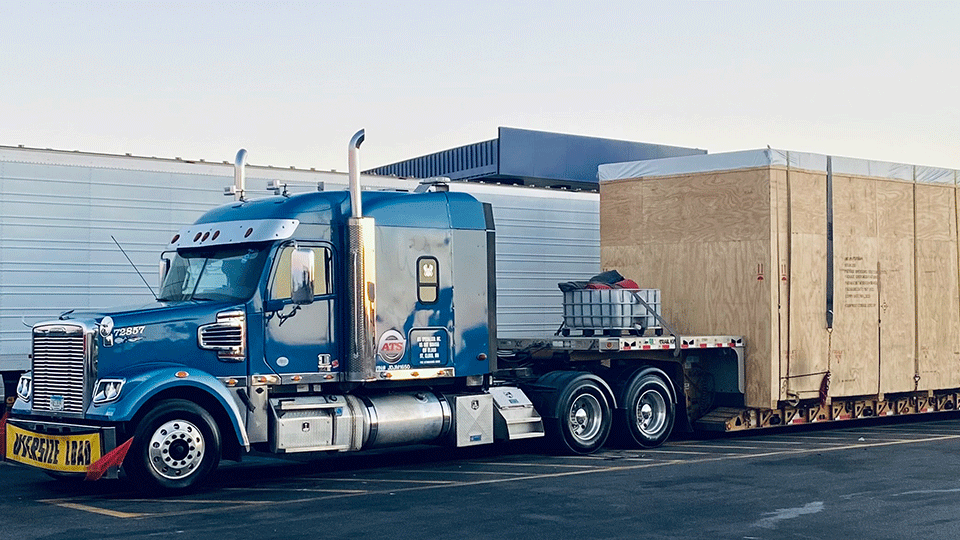
We’re a little over halfway through 2022, a year that has — to this point — been challenged by worldwide economic disruptions and supply chain congestion issues. No matter what industry your company is in, it has likely been impacted — in some form or another— by the current state of our world.
Whether it’s inflated gas prices making it more expensive to get to work, or labor shortages leaving more on your plate when you get there, no one can complain that 2022 has been uneventful.
Transportation companies certainly haven’t been bored. So far this year, professionals in all realms of the logistics space from truck drivers, freight brokers and port workers to warehouse associates, truck/trailer mechanics, operations employees and countless others have been tested in unique ways.
The transportation industry has a direct influence on all others; every product, raw material, machine, etc. is transported (at least once) during its lifecycle. As such, the issues faced here directly impact the well-being of the U.S.’ larger economic outlook.
In January, we released an article forecasting what 2022 would look like for the U.S. transportation industry and its stakeholders. Some of those predictions came to pass, many of them are on the horizon and others simply never surfaced.
Here at Anderson Trucking Service (ATS), nearly 70 years in this industry have taught us just how unpredictable things can get. However, we’re also aware of the profound impact a company’s transportation supply chain plays in its overall success and how uniquely positioned we are to provide value here.
So, we felt that now — as the latter half of 2022 begins — was as good a time as any to release an update on the current state of the transportation industry.
This article will catch you up on what we’ve seen from a transportation perspective so far this year and give you some information on what to expect as 2022 marches on.
Below, you’ll find information separated into a few sections:
- What challenges has the transportation industry faced so far this year?
- How the 4 indicators of the transportation industry’s health have changed
- What you can expect the rest of the year to bring
- Tips for managing your transportation logistics going forward
In such a complex industry and fast-paced business environment, it’s difficult to get a leg up on the competition. That said, with the right resources, tools and information at your fingertips, maximizing your supply chain is not impossible.
Reading this article is your first step toward improving your processes going forward.
What Challenges Has The Transportation Industry Faced So Far This Year?
Like many others, transportation companies face their fair share of challenges. Through the first two quarters of 2022, businesses in this industry have been tested in a number of ways.
Navigating these turbulent waters — though more difficult for asset-based carriers — hasn’t been easy for any organization. And, as the year continues to progress, it’s likely that the pinch felt by transportation businesses will linger.
The major disruptive forces impacting transportation service providers can be separated into four buckets, each leaving a distinct impression on the business of U.S. freight movement.
Those disruptors are:
Let’s continue by briefly outlining what is going on with each of these disruptors and why they have made 2022 uniquely difficult.
The Affect of Labor Shortages
According to a July 2022 report released by the U.S. Chamber of Commerce, labor force participation in the U.S. is down from 63.3 percent to 62.2 percent since the beginning of the COVID-19 pandemic — a pandemic that caused more than 120,000 businesses to (at least temporarily) close.
Although there has been a progressive increase in U.S. job openings and hires over the past 12 months, the labor shortage’s ongoing presence is undeniable.
Among the many jarring statistics sighted by the U.S. Chamber of Commerce is this: the U.S. labor force has 3.25 million fewer workers today than it had in February 2020.
This many workers missing from the labor market takes a toll on companies across industries — with the retail, hospitality and food sectors topping the list of affected industries.
Transportation companies, however, also feel the impact of labor shortages. In such an operationally intense space, requiring start-to-finish, hands-on oversight to accomplish most freight shipments, too many empty chairs at a trucking company, 3PL or freight brokerage spells trouble for that company and its customers.
As a result, transportation companies have had to battle against recruiting and retention issues in all areas of their business (from truck drivers to corporate employees). These issues are expected to continue through 2022.
The Impact of Parts and Supply Shortages
While labor shortages have impacted many industries this year, parts and supply shortages have concerned far fewer. But this doesn’t make them less disruptive.
Spurred, in all likelihood, by labor shortages and international supply chain congestion, the parts and supplies needed to maintain transportation vehicles and equipment have been scarce in 2022.
As predicted, maintenance costs for semi-trucks, semi-trailers and ancillary trucking equipment have risen this year. This has made it impossible for asset carriers to keep their fleets running at the same price points as years prior.
In turn, trucking companies have been forced to increase their rates — trickling heightened expenses down to their customers.
Parts and supply shortages have made, perhaps, the largest impact on individual owner-operator truck drivers. These individuals, who essentially run a trucking business, have had trouble keeping their trucks on the road due to extreme maintenance expenses. As a direct result, the first half of the year has seen many of these drivers joining larger, private or for-hire fleets, lowering the number of trucking companies in operation.
Wondering What Transportation Will Look Like in 2023? Read The 2023 Transportation Industry Market Forecast Here
The Ongoing Semi-Truck Shortage
After roughly 800,000-1,000,000 miles, semi trucks are removed from the over-the-road (OTR) market.
Using them OTR beyond this point can be a safety and/or efficiency issue.
For every truck that “retires” it’s important to have another one to replace it. Failing to replace even a single truck — and shorting the overall market one transportation solution — can cause a ripple effect.
Considering that the average truck driver covers no less than 80,000-100,000 miles per year, you can see why a shortage of trucks would impact this industry’s productivity.
Every year, to maintain the number of trucks this industry needs, semi-truck manufacturers need to produce around 230,000 new vehicles. Unfortunately, the industry missed this mark in both 2020 and 2021.
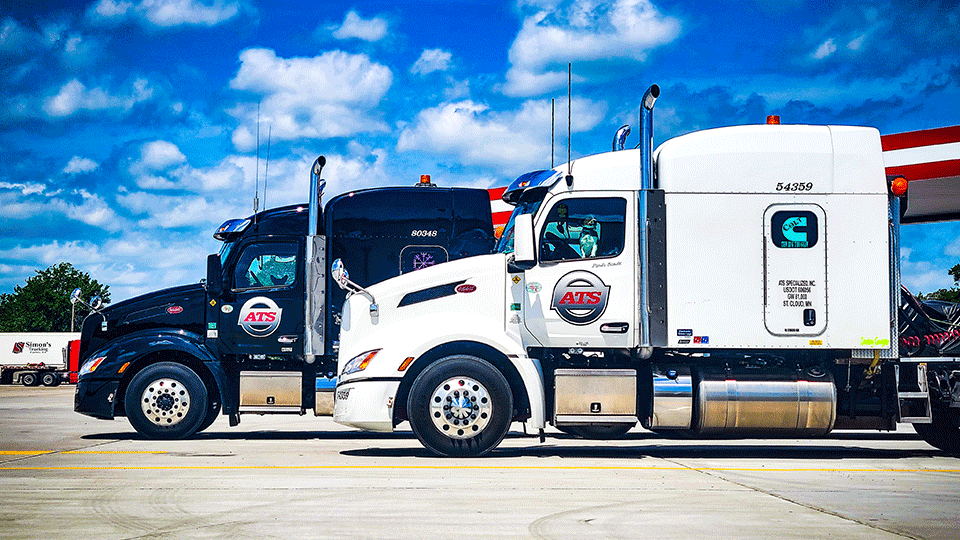
As a result, the price of purchasing a new semi-tractor has increased. Trucking companies, which purchase new trucks for replacement and fleet expansion purposes have not been able to do so this year.
This is especially remarkable when you consider how rising spot rates — influenced by many of these factors — present an excellent opportunity for carriers to expand their business. And, in a healthy market, most carriers take advantage of this.
On a more positive note: as of right now, semi-truck manufacturers are on pace to hit 250,000 trucks this year. This far exceeds their output in years prior and may indicate the start of a potential decongestion of those supply chains.
Rising Inflation Hits Transportation Too
In June 2022, the U.S. Bureau of Labor Statistics announced that the consumer price index (CPI) for all urban consumers had risen 9.1 percent over the past 12 months and 1.2 percent in June alone.
Two major categories drove this CPI increase:
- Energy (41.6 percent increase)
- Food (10.2 percent increase)
Price inflation in these sectors has been felt by everyone. However, energy prices have also impacted transportation companies.
You see, by and large semi-trucks get 6.5 miles to the gallon. This means that on a 500-mile shipment, a semi-truck burns no less than 76 gallons of fuel. All told, the transportation world uses more than 500,000 gallons of diesel every day.
The average price of diesel fuel in 2021 was $3.28 or $252.31 for a 500-mile shipment. In June, a gallon of diesel cost no less than $5.25 across the board, raising the cost of fuel used on that 500-mile haul to $403.85 (a 60 percent increase).
As a result, transportation companies saw their fuel spending increase substantially over the last 12 months. And, since this expense is passed on to shippers in the form of fuel surcharges or heightened all-in rates, every industry has felt the impact of higher fuel costs.
Related: An Explanation of How Rising Fuel Costs Affect Transportation (+3 Budgeting Tips)
How Have The 4 Indicators of The Transportation Industry’s Health Changed?
In our last industry forecast, we outlined the four indicators that, together, do an apt job of displaying the overall health of the transportation industry.
These indicators are:
- The demand for transportation services
- The supply of transportation services
- The cost of providing transportation services
- The cost of procuring transportation services
Without the others, none of these truly indicate the current state of the transportation world. Looking at them collectively and analyzing how each impacts the next is more effective.
Let’s continue by looking at how each of these leading indicators has changed in 2022 so far.
Demand For Transportation Services
Coming into the year, we predicted that demand for transportation services would slow down. We asserted that as inflation and housing prices rose, consumer spending would slow down and the buying patterns of people would change.
In turn, the portions of truck demand that are directly tied to consumer spending would shrink. Examples of these include retail and consumer freight in the dry van market and raw building materials in the open deck space.
Consumer spending accounts for about two-thirds of the U.S.’ gross domestic product (GDP) and plays a major role in the overall market demand for transportation services.
We predicted that a large shift in consumer buying habits would result in significantly fewer goods for transportation companies to move in 2022.
To this point, consumer spending has not slowed down nearly as quickly as we’d imagined it would. Though we have seen some drop off in overall consumer-driven demand, for one reason or another, much of it has remained.
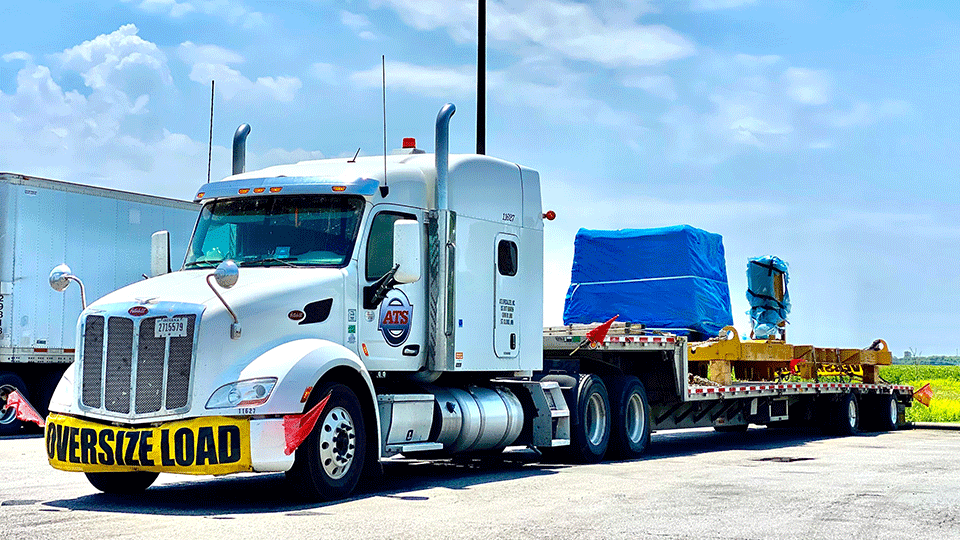
Conversely, businesses — which account for one-third of the U.S.’ GDP — continue to have a strong cash position, on average.
That said, demand for transportation services has remained steadier than we anticipated coming into 2022. And, though a slight shift has occurred, lowering spot rates slightly, it has not happened as quickly as we’d predicted it would.
Supply Of Transportation Services
As mentioned above, the transportation industry is currently battling against three unprecedented issues: a shortage of labor, a shortage of parts and a shortage of trucks.
Together, these three shortages have made it challenging for transportation companies to keep up with demand. Without enough drivers and essential personnel, new equipment to utilize and parts to keep trucks running efficiently, many carriers have felt some pain in 2022.
Although the fact that manufacturers are on pace to produce 250,000 new trucks this year is encouraging, the supply of transportation service providers/solutions has not grown in 2022.
In a normal cycle, when spot rates rise, trucking companies take steps to purchase vehicles and equipment, hire drivers and expand their fleet. This year has not been conducive to this tactic, presenting carriers with barriers at every step of the way.
The Cost of Providing Transportation Services
The four major expenses every trucking company faces are fuel, truck driver salaries, insurance premiums and equipment maintenance/renewal costs.
So far in 2022, these expenses have increased across the board. Here’s how:
Fuel Prices
The price of a gallon of diesel fuel has risen substantially over the past twelve months. Since every truck relies on diesel, price inflation here can’t be dodged.
Truck Driver Salaries
Truck driver salaries are driven by market demand for transportation services. This demand has outweighed supply for a number of years now. In 2022, truck driver salaries have stayed high as trucking companies look to compensate drivers appropriately and remain competitive with the pay of other industries. Truck driver salaries greatly influence contract rates and are one of the reasons these prices are holding steady.
Insurance Premiums
Insurance premiums in the transportation world have inflated substantially over the past few years as “nuclear verdicts” become increasingly common. These insurances are meant to protect carriers and compensate their customers should something unforeseen occur on a shipment. As such, purchasing adequate insurance is unavoidable — no matter the cost.
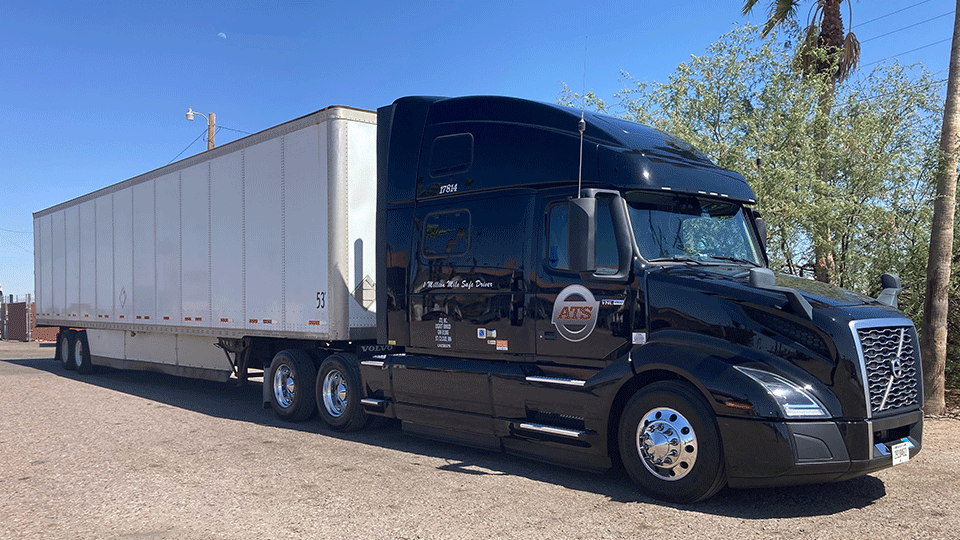
Equipment Maintenance and Renewal Costs
As we outlined above, maintaining a fleet of trucks and trailers has gotten really expensive this year. A shortage of trucks, parts and supplies continues to exist and makes an impact on every trucking company’s balance sheet.
All told, the cost of running a transportation company, and providing these services, has only risen in 2022. Hopefully, as worldwide supply chain congestion softens, this will change. As of now, though, this is the reality we’re operating in.
The Cost of Procuring Transportation Services
The final indicator of the transportation industry’s health is what it costs to secure a transportation solution. If you’re at all familiar with booking a truck, you know there are a lot of factors that drive individual freight rates.
The supply of, demand for and costs associated with providing, transportation services sets the price bar for the larger industry.
Overall this year, spot freight rates have been higher, aligning closely with what we’ve seen in years prior. More recently, spot rates have softened slightly, particularly in the dry van market as disruption internationally impacts U.S. freight movement and consumer patterns change (however slightly).
If price inflation — particularly in the energy sector — falls, spot rates will likely follow.
As of now, however, securing a transportation solution continues to cost more than many companies are comfortable with, pushing them to lock in shorter-term contract rates and trickle these expenses down to consumers.
The Remainder of 2022: a Look Ahead
With a little less than half of the year remaining, it’s important to look ahead and set expectations for what the rest of 2022 might bring.
In many ways, we expect freight movement to carry on as usual as August bleeds into September and so on.
That said, here are a couple of thoughts on the balance of the year:
- Spot rates will continue to slide in Q3, but. . .
- Peak retail season in Q4 will be slower than last year
- Inflation and shortages will continue in many sectors
- Supply of trucks will remain constrained
Spot Rates Will Continue to Slide in Q3, but…
It is likely that spot rates will continue to decrease, at least marginally. That said, the stagnant supply of trucks, equipment and drivers may keep spot rates from retreating all the way back to contract-rate levels.
Peak Retail Season in Q4 Will Be Slower Than Usual
Due to inflationary pressures, we still assert that consumer spending will slow down to round out the year. As a result, Q4’s peak retail season will likely be slower than last year.
Supply chain congestion in other countries could also contribute to this. You see, many of the consumer goods being purchased for the holiday season are manufactured/produced in foreign countries. These countries, like China, have been enacting sporadic shutdowns recently to combat ongoing COVID-19 concerns.
With production facilities, warehouses, businesses and ports shut down in these countries, this hasn’t been happening as efficiently as usual — making it likely that U.S. consumers could still have difficulty receiving their products this year.
Related: Peak Season Shipping: 5 Ways to Prepare For Your Busy Season
Inflation Will Continue in Many Sectors
Inflation has been rising consistently throughout the year and, unfortunately, this will probably continue through the end of 2022 in many sectors including food, energy and housing.
For this reason, expect trucking companies to struggle to keep spot rates down and transportation prices to hold steady.
Supply of Trucks Will Remain Constrained
Although semi-truck manufacturing companies have done a good job producing new vehicles this year, the supply of trucks will remain constrained for the foreseeable future. Since replacement volumes went unmet in both 2020 and 2021, the overall quantity of trucks in the U.S. marketplace is below where it would be in a healthy market. This will be the reality well into 2023.
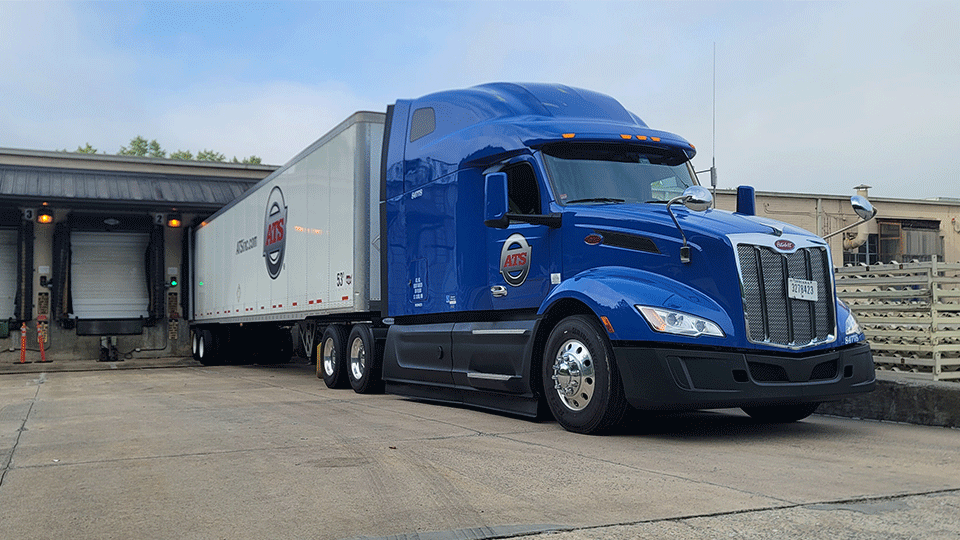
3 Tips For Managing Your Transportation Logistics Going Forward
Now that you understand the main challenges the transportation industry has faced in 2022 so far, and what we predict the main hurdles will be over its remainder, let’s talk about what you can do to effectively manage your transportation supply chain in the months ahead.
There are several ways to improve our transportation network, processes and procedures. When it comes to combating the current pressures at play in the transportation world, here are three things to prioritize. . .
Work With Stable Transportation Companies
With so much instability in the transportation space at the moment, it’s imperative that you work with financially stable companies.
Many trucking companies and transportation providers will struggle to stay in business and hold to their commitments as labor shortages, parts shortages, truck shortages, inflation and insurance premiums (to name a few) continue to challenge them.
The last thing you need is to have your supply chain face serious issues because your transportation company didn’t have adequate staying power. Avoid this by working with well-seasoned carriers and vetting your transportation providers accordingly.
Give Carriers Adequate Lead Time on Every Load
Giving 24-72 hours of lead time notice for every load is one of the most impactful things you can do to receive a high level of service and competitive pricing from your transportation companies.
As the transportation industry continues its struggle to meet demand and keep U.S. freight moving, be sure to provide adequate lead time going forward.
Allow as Much Flexibility as Possible
Flexibility goes a long way in the transportation world. With a bit of lenience as to pickup/delivery appointment times and which equipment type they can utilize, your carriers will be far more capable of meeting your demands at softer price points.
Related: 4-Out-Of-The-Box Ways to Save Money On Your Freight Rates
Set Your Sights on a Fruitful 2023
Looking ahead to 2023, the crystal ball is a little cloudy. We will definitely keep an eye on inflation and the spending patterns of consumers. There is one thing we know for sure: success will take a well-oiled supply chain and transportation network.
You deserve to feel confident in the health of your logistics going forward. As such, your next step is to read this article, which lists the largest indicators of an unhealthy supply chain and provides some tips for making improvements.
Finally, if you would like to learn more about the steps ATS is taking to remain competitive and help its customers succeed, not only this year but into the future, check out our services page for more information.





